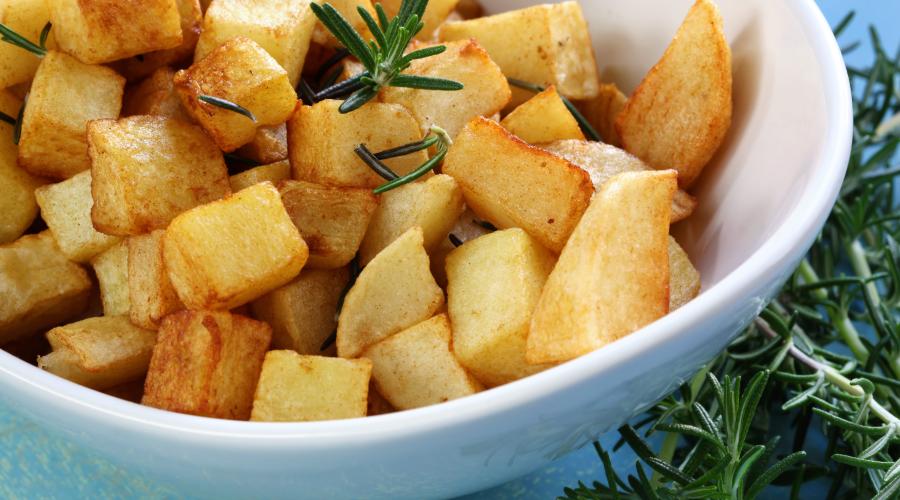
Vegetables fall into two main categories: starchy and non-starchy. Starch, which is a type of carbohydrate, is present in many vegetables, including corn, yams, and peas, as well as our veggie of the month: potatoes. This root vegetable often gets a bad rep for its presence in fatty foods such as french fries and chips, but with healthy portion sizes and cooking methods, the potato provides some pretty spectacular health benefits.
Support Blood Sugar Balance
Potatoes contain resistant starch, which means it’s not completely broken down in the digestion process. Instead, potatoes reach your colon relatively undigested, where they become a nutritional source for friendly gut bacteria. 1, 2, 3 As a result, adding this type of starch to a healthy diet may reduce insulin sensitivities.4 Another study conducted on individuals with type 2 diabetes found that incorporating resistant starch into a meal can promote blood sugar balance. 5 To promote this balance, try roasting potatoes and allow them to cool before eating. In this state, they contain more significant amounts of resistant starch than when eaten warm.
Potassium & Blood Pressure
One medium potato contains 26% of the recommended daily intake of potassium, which plays an important role in muscle function 6. Research shows that altering your diet to intake less sodium and increase your intake of potassium can help decrease your blood pressure, 7 which is a good reason to eat up!
Pack In Vitamins and Minerals
Potatoes contain many important vitamins and minerals, including zinc, calcium, iron, folate, and magnesium. 8 These nutrients are found in the skin and the flesh, so to gain the full benefits potatoes have to offer, consume them with the skin on, rather than peeling it off.
Fill Up Without The Fat
While high in carbohydrates, potatoes contain almost no fat. At the same time, potatoes rank as one of the most satiating foods. Substituting potatoes for other carbohydrates, like white rice or pasta, could help you fill up faster and prevent post-dinner snacking.
How To Eat More Potatoes
You may already be eating potatoes, but to gain this vegetable’s nutritional benefits, watch your portion sizes and steer clear of fried potatoes or chips. Instead of frying, try boiling or roasting potatoes with their skin on. For a mouth-watering side dish that’s perfect with almost any meal, try this roasted potato recipe and season with a touch of olive oil and spices. Or, if you’re craving that crunch of potato chips but want to skip the fat and processed carbs, try accordion potatoes - the unique cooking method will give you a golden, crispy potato slice in every bite.












